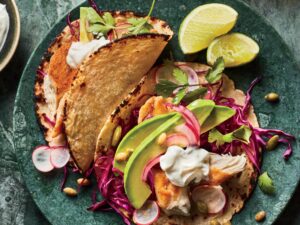Plant-based cooking is no longer a niche trend; it’s a culinary movement that’s here to stay. As more people embrace healthier, environmentally friendly diets, the demand for delicious and satisfying plant-based alternatives has surged. One such alternative that has taken the world by storm is Beyond Meat’s Beyond Beef Ground.
In this article, we’ll explore the art of cooking with plant based ground beef and how to make it not just taste good but taste great. We’ll answer common questions about cooking Beyond Beef, provide tips on how long to cook it and discuss how to achieve that familiar beefy flavor. We’ll also dive into the nutritional aspects and address the concerns you may have about whether Beyond Meat is actually healthy. Along the way, we’ll touch upon finding vegetarian recipes, explore the concept of “airfood,” and discuss the broader topic of food and dieting.
Cooking Beyond Beef Plant-Based Ground
Beyond Meat has become a household name in the world of plant-based alternatives, and Beyond Beef Ground is one of its standout products. Before you dive into cooking, it’s essential to understand what sets this plant based ground beef apart. Beyond Beef is made from simple, plant-based ingredients like peas, mung beans, and rice. It’s free from GMOs, gluten, and soy, making it a versatile option for those with dietary restrictions.
To start cooking Beyond Beef, follow these basic steps:
- Preparing the Beyond Beef: Like traditional ground beef, Beyond Beef is incredibly versatile. Begin by thawing it if frozen, and then consider how you’d like to use it. Whether you’re making burgers, tacos, meatballs, or chili, Beyond Beef is up to the task.
- Choosing the Right Cooking Method: Beyond Beef can be cooked using various methods, including pan-frying, grilling, or even baking. The choice of method depends on the dish you’re preparing. For a quick burger, pan-frying works wonders, while grilling imparts a smoky flavor.
- Adding Seasoning and Flavoring: While beyond Beef has a delicious and savory base, adding your favorite seasonings and spices is the key to making it truly delectable. Experiment with different flavors to match your dish’s cuisine.
- Cooking Times and Temperature: The cooking time and temperature can vary depending on your chosen method and recipe. As a general rule, cook Beyond Beef until it’s heated through and has achieved your desired level of browning. Be careful not to overcook it, as it can become dry.
In the next section, we’ll delve into the specifics of how long to cook plant-based beef for various recipes.
How Long to Cook Plant-Based Beef
The cooking time for Beyond Beef can vary depending on the recipe and your chosen cooking method. Here are some general guidelines to help you get started:
- For Beyond Beef burgers, cook each side for approximately 3-4 minutes over medium-high heat for a medium-rare result.
- When making tacos or meatballs, cook for 8-10 minutes, stirring occasionally, until browned and cooked through.
- For chili or other slow-cooked dishes, simmer for at least 20-30 minutes to allow the flavors to meld.
Remember that Beyond Beef cooks relatively quickly compared to traditional beef, so keep a close eye on it to prevent overcooking.
In the next section, we’ll address the question of whether you can cook Beyond Meat like ground beef and explore some tips for adapting traditional beef recipes.
Can You Cook Beyond Meat Like Ground Beef?
One of the fantastic features of Beyond Beef is its versatility. Yes, you can cook it just like ground beef! Whether you’re making a classic spaghetti Bolognese or a hearty shepherd’s pie, Beyond Beef can seamlessly replace traditional ground beef in your favorite recipes.

The texture and taste of Beyond Beef closely mimic that of ground beef, making it an ideal choice for transitioning to plant-based cooking. To adapt your favorite recipes, use Beyond Beef in a 1:1 ratio with traditional ground beef and follow the same cooking instructions. Whether you’re preparing classics like spaghetti Bolognese or exploring more gourmet options like how to Make Easy Beef Carpaccio with Arugula, Beyond Beef opens up a world of culinary possibilities.
In the next section, we’ll share some tips on how to make Beyond Meat taste even more like beef.
How to Make Beyond Meat Taste like Beef
While Beyond Beef already boasts a savory and meaty flavor, there are ways to make it taste even more like traditional beef. Here are some tips:
- Season Liberally: Don’t hold back on your seasonings and spices. The more you season Beyond Beef, the closer it will come to tasting like beef. Experiment with garlic, onion powder, smoked paprika, and Worcestershire sauce for added depth.
- Use Umami-Rich Ingredients: Ingredients like mushrooms, soy sauce, and tomato paste are rich in umami, the fifth taste associated with meatiness. Incorporating these ingredients into your recipes can enhance the beefy flavor.
- Brown Well: Achieving a good sear or browning on Beyond Beef can enhance its flavor profile. Make sure to cook it until it develops a satisfying crust.
Is Beyond Meat Actually Healthy
The healthiness of Beyond Meat, like any food product, depends on how it fits into your overall diet and lifestyle. Here are some key points to consider:
- Lower in Saturated Fat: Beyond Beef is notably lower in saturated fat compared to traditional ground beef. High intake of saturated fat is associated with various health issues, including heart disease. Choosing beyond Beef can be a heart-healthy choice.
- No Cholesterol: Plant-based meats like Beyond Beef are naturally cholesterol-free, whereas animal-based meats contain cholesterol, which can contribute to heart problems.
- Rich in Protein: Beyond Beef is a good source of plant-based protein, which is essential for muscle growth and overall health. It provides an excellent alternative for those looking to reduce their meat consumption while maintaining protein intake.
- Added Nutrients: Some plant-based meat alternatives, including Beyond Meat products, are fortified with essential nutrients like B vitamins and iron, which can be lacking in vegetarian diets.
- Lower Environmental Impact: Choosing plant-based options like Beyond Meat also aligns with environmental concerns, as it generally has a lower carbon footprint and reduces the demand for resource-intensive animal agriculture.
However, it’s essential to note that not all plant-based meat alternatives are created equal. While Beyond Beef has several health benefits, some plant-based products on the market may contain high levels of sodium or additives. Therefore, it’s always a good idea to check the nutrition label and ingredients list when choosing plant-based products and to incorporate them into a balanced diet.
Find Vegetarian Recipes
If you’re excited about incorporating Beyond Beef into your diet but need recipe inspiration, there are plenty of resources available. Find Vegetarian Recipes has never been easier, thanks to the abundance of cookbooks, websites, and food blogs dedicated to plant-based cuisine.
Some popular sources for vegetarian and plant-based recipes include:
- Cookbooks: Look for cookbooks by renowned authors such as Isa Chandra Moskowitz, Thug Kitchen, and Mark Bittman, all of whom offer an array of creative and satisfying plant-based dishes.
- Websites: Explore websites like Minimalist Baker, Oh She Glows, and Veggie Inspired for a wide range of delicious and accessible recipes.
- Food Blogs: Many food bloggers specialize in plant-based cooking. Follow blogs like The Plant-Based Wok, Love and Lemons, and The First Mess for innovative recipes and cooking tips.
Exploring Airfood Recipes
Airfood is an emerging concept that combines sustainability and gastronomy, offering new ways to prepare and enjoy food. It involves creating edible morsels from the air’s natural elements, such as carbon dioxide and water, without the need for traditional farming. If you’re intrigued by this innovative approach, you can explore How to Make International Airfood Recipes in Your Kitchen to create plant-based delights from the air’s essential elements.
While airfood is still in its experimental stages, there are intriguing possibilities for incorporating Beyond Meat products into this innovative approach. Imagine creating plant-based “air burgers” or “air tacos” using Beyond Beef, further reducing the environmental impact of food production.
Incorporating airfood into your cooking repertoire not only challenges conventional culinary norms but also contributes to a more sustainable future for food.
Food and Dieting
As you embark on your plant-based cooking journey with Beyond Beef, you may wonder about its role in your dietary goals. Plant-based diets are renowned for their health benefits, which include weight management and improved overall well-being.
Plant-based diets can be adapted to various dietary goals, whether you’re looking to lose weight, maintain a healthy lifestyle, address specific health concerns, or explore innovative approaches to Food and Dieting. The flexibility of plant-based eating allows you to tailor your meals to meet your unique needs.
However, it’s essential to maintain a balanced diet by incorporating a variety of plant-based foods, including fruits, vegetables, whole grains, legumes, nuts, and seeds. Consulting with a registered dietitian or nutritionist can help you create a personalized plant-based diet plan that aligns with your goals.
Conclusion:
In conclusion, cooking with Beyond Beef Ground opens up a world of culinary possibilities in the realm of plant-based cuisine. Its versatility, health benefits, and environmentally friendly nature make it a valuable addition to any kitchen.
By following the tips and guidelines provided in this article, you can master the art of cooking with Beyond Beef, create delicious plant-based dishes, and contribute to a more sustainable food future.





No Comment! Be the first one.